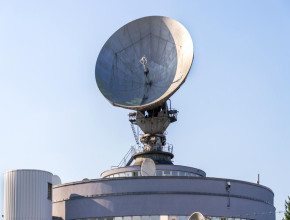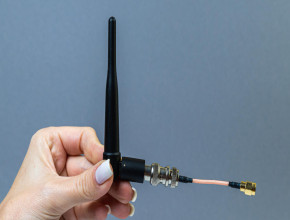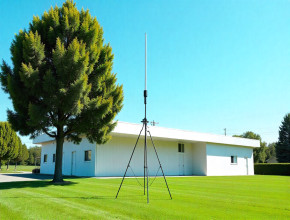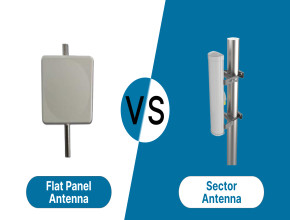
A Yagi Antenna is one of the most common kinds of antennas that you will find in the market. It is very simple to use Yagi antennas in television broadcasting and reception. In this blog, we will discuss everything related to Yagi antennas, their benefits, how they work, their applications, and their uses.
What Are Yagi Antennas?
Before discussing the uses and benefits of the Yagi antenna, let us know about this antenna. A yagi antenna is a kind of directional antenna that contains dipole and parasitic elements. Normally, yagi antennas are made from different types of metals such as aluminum and metal alloys.
The appearance of a UHF Dual Stacked Yagi Antenna is like a long transmission line with multiple antenna elements connected to its length. The most popular elements in the Yagi antenna are the reflector and driven element.
Directional properties of yagi antennas are achieved by the driven element and reflector. They help the antenna to focus signal strength in a single direction and reject signals from other directions.
What Is a Yagi Antenna Used For?
Now, let us discuss the different uses of a Yagi antenna. It is normally used to gain higher signal reception strength in the points where the signals are weak and have certain obstructions. These antennas can emit signals and receive them even from a far distance.
This antenna will give higher directive gain values to reach a far-off distance. You will find yagi antennas in areas that are far from broadcast towers.
In addition, you can use Yagi antennas to boost WiFi signals. They are very useful in the areas where there are weak signals. Moreover, yagi antennas are useful in different devices such as television broadcasts, dual-band radios, and 2-way communication systems.
How Does a Yagi Antenna Work?
Yagi antennas work in a different way from other types of antennas. This antenna uses antenna arrays for amplifying and directing electrical signals from a transmitting point to a receiving device. You can increase the radiation resistance of an antenna to make it efficient.
This antenna works with the help of a radiating element that acts as the main radiation source of the antenna. A reflector is located behind the main element and reflects the signals back to the driven elements. The propagation pattern of a yagi antenna starts from the driven element and ends at the directors. Yagi antennas have an end—fire radiation pattern and have an antenna axis parallel to a main lobe.
Benefits of Yagi Antenna
Yagi antenna has several benefits over other antennas such as:
- A yagi antenna is lightweight as well as small in size.
- This antenna has a wide bandwidth because of the use of a folded dipole.
- Yagi antennas give a unidirectional radiation pattern which is better than other kinds of antennas.
- You can easily mount yagi antennas on vertical and other kinds of poles with the help of simple mechanical tools.
- Yagi antennas give an increase in directivity and gain and perform better than a dipole antenna.
- These antennas are less expensive and can be easily built by the antenna experts.
Elements of Yagi Antennas
The performance of the Yagi antenna is determined by the length, element diameter, and spacing of an antenna. To understand the workings of the VHF Dual Stacked Yagi Antenna, it is necessary to know the different elements of the antenna. The different elements of the Yagi antenna are listed as under:
1. Driven element
The most important component of Yagi antennas is the driven element. This element is responsible for radiating and receiving radio waves in the antenna system. The driven element has a feed point at the center for the attachment of the coax cable from the transmitter to transfer energy to the antenna.
The length of a driven element is half wavelength. This element has a larger diameter than the other types of elements in an antenna. As a result, the driven element absorbs high energy levels for increased bandwidth.
2. Reflector element
The reflector element is the longest element located at the rear of the dipole. The length of the reflector of the Yagi antenna is longer than the driven element. Space between the dipole and the reflector is determined by various factors such as bandwidth, side lobe, gain pattern specifications, F/B ratio, and so on.
This element mainly adds gain to reflect the energy produced at the driven element and send it in one direction. Reflector increases the power of the signals transmitted and the antenna range as well. It also helps in improving unwanted side lobe suppression.
3. Director element
The director element is located at the front of the driven element in a direction that has high sensitivity. This is the shortest parasitic element and is shorter than the dipole. It helps the antenna is resonant on a particular range. The director helps to get the required directional pattern and gain. The length of an antenna array mainly determines the gain of the antenna.
Types of Yagi antennas
Yagi antennas are of various types such as Dual Stacked Yagi Antenna, High Gain Dual Stacked Yagi Antenna, and Dual Stacked Circular Polarized Yagi Antenna, and so on. Each antenna has a different purpose and can be used for various tasks and applications.
Where to get the best Yagi antennas?
Yagi antennas can be found from the online manufacturers of antenna and stores. You can get the best High Gain Dual Stacked Yagi Antenna on Google. Another way to find High Gain Dual Stacked Yagi Antenna Supplier is by visiting the official websites of these suppliers. You can also visit the social media sites of these manufacturers to get more details of these antennas and their features.
You can ask for quotes from the various manufacturers and compare them. After comparing the prices, you can pick the best antenna that fits your needs and budget. Some manufacturers also provide a discount on bulk orders of the products.





